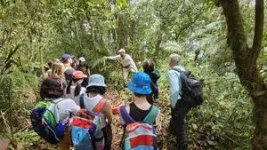(Press-News.org) A team of University of Virginia researchers released the first-ever database of hurricane evacuation orders in the United States. By examining what has worked (and hasn’t) in the face of oncoming hurricanes, leaders and government officials can increase community resilience, create better policy and, ultimately, reduce loss of life.
The project, seed-funded by UVA’s Environmental Institute, teamed Majid Shafiee-Jood and Negin Alemazkoor and Harsh Anand, an engineering doctoral candidate, from the School of Engineering and Applied Science. The trio spent countless hours gathering all nationwide public-facing evacuation orders and created a database that can be used by researchers and practitioners to measure the effectiveness of hurricane evacuation policies.
The Institute connected with Shafiee-Jood, an assistant professor of civil engineering and systems and information engineering, and Anand to learn more about the impact of this research which was recently published in Nature Scientific Data.
Q. What did you and your team create? What information is in this database?
A. We created the first comprehensive database of hurricane evacuation orders in the United States – the HEvOD (Hurricane Evacuation Order Database).
Our database includes evacuation orders issued by official state and local agencies in response to hurricanes that impacted the United States between 2014 and 2022 (25 hurricane events in total). We collected archival orders from multiple sources, including official websites and social media accounts of local and state governments and government agencies, as well as news platforms. Corresponding to each evacuation order, we included information on the type of the order (mandatory or voluntary), the announcement date and time of the order, the effective date and time of the order (where applicable), and the areas that were the target of the order for evacuation. The database also includes information regarding the State of Emergency as declared by the governors in response to the events.
We were driven by the recognition that while evacuation orders are crucial for public safety during hurricanes, there was no database of historical hurricane evacuation orders.
As we move into more intense hurricane seasons due to a changing climate, helping our communities be more resilient and potentially protect themselves in the face of incoming hurricanes is going to be valuable.
Q. Why wasn’t there such a database already in existence?
A. From experience, it is very challenging to compile such a database! We had to navigate through various complexities.
For instance, evacuation laws and policies vary widely across states. States differ on who has the legal authority to order mass evacuations (such as local jurisdictions and governors). State and local entities also differ in how they communicate the details of evacuation orders including order type and geographic size of the location.
Additionally, a wide range of platforms are typically used to disseminate the orders (press conferences, press releases, social media, news media, and public outlets) This makes the process of data collection and verification challenging and time-consuming.
Q. How can people access it?
A. HEvOD is publicly accessible through LibraData, the University of Virginia's open-access repository, and can also be accessed from our website www.hurrevacorder.info.
Q. How can this database be useful to the government?
A. Local and state government officials can use our database to assess the effectiveness of evacuation orders issued during past hurricane events and plan more effective strategies for future emergencies. By understanding where, when, and how evacuations have been ordered in the past, emergency management officials can optimize their response plans and communication strategies, enhancing public safety and community resilience.
Q. What potential does this database hold for future use?
A. The primary aim is to provide the foundation for a detailed analysis of evacuation strategies and procedures to determine their effectiveness and to identify areas for improvement. This can improve policy decisions, leading to more targeted and timely evacuation orders, better resource allocation, and, ultimately, reduced loss of life during hurricanes.
We also hope to identify trends and patterns that could predict the need for evacuations more accurately.
Additionally, HEvOD allows integration with other data sources, which we believe will be exciting to other disciplines of research. For example, social scientists, urban planners, and environmental scientists can analyze evacuation responses in diverse communities.
Q. Did anything surprise you about the information?
A. Yes! A surprising finding was the significant variation in how different jurisdictions implement and communicate evacuation orders. While some counties are governed by state authorities, others are more ad hoc based on local emergency management authorities. This underscores the complexity of creating a standardized system for emergency evacuations and highlights the importance of having a centralized database to capture these variations comprehensively.
Q. What are the next steps now that you have this information?
A. We have already started using HEvOD to answer some outstanding research questions on hurricane evacuation decision-making.
For instance, in one study, we are quantifying the effectiveness of mandatory hurricane evacuation orders issued in response to Hurricane Dorian (2019) in Florida.
In another study (recently funded through an EI Rapid Grant), we are comparing the relationship between evacuation orders and evacuation patterns in the cases of Hurricane Ian (2022) and Hurricane Idalia (2023).
Our goal is to update and expand the HEvOD database annually after each hurricane season. To keep it relevant and effective, we welcome contributions and collaboration. Additionally, our website (www.hurrevacorder.info) features a section where users can assist by adding missing data or correcting errors, further improving the quality and utility of the database.
END
First-ever hurricane evacuation order database may hold keys to future readiness
University of Virginia researchers combine civil engineering and systems and information engineering to help leaders and communities
2024-07-18
ELSE PRESS RELEASES FROM THIS DATE:
UVA researchers drive safety forward on 3 Toyota collaborative projects
2024-07-18
The Center for Applied Biomechanics at the University of Virginia studies the impact of car crashes on the human body, aiming to improve injury prevention. Funded by Toyota’s Collaborative Safety Research Center, CAB’s three newest projects will study rib, lumbar and ankle injuries specifically.
Jason Forman, a UVA Engineering and Applied Science research associate professor in the Department of Mechanical and Aerospace Engineering, is the principal investigator on two of the studies.
One study will use ...
Hundreds of new genome sequences fill gaps in the fruit fly tree of life
2024-07-18
A multitude of new genomic sequence data fills major gaps in the fruit fly tree of life, Bernard Kim from Stanford University, US, and colleagues report in the open-access journal PLOS Biology, publishing July 18th.
Fruit flies are classic model organisms in biological research and were among the first species to have their whole genome sequenced. With over 4,400 species, the diversity of the fruit fly family could offer insights into evolutionary patterns and processes. But only a fraction of these species ...
Large-scale GWAS reveals genetic architecture in the VA Million Veteran Program
2024-07-18
A large-scale genome-wide association study (GWAS) using data from the United States Department of Veterans Affairs (VA) Million Veterans Program (MVP) – one of the largest US-based biobanks – fills crucial gaps in our knowledge of the relationships between genes, traits, and disease across diverse populations, according to a new study. The findings underscore the importance of diversity in genetic studies and the need for expanding representation in future GWAS investigations. GWAS studies have provided foundational knowledge about the genetic basis of disease ...
Foraging niches narrow near birds’ geographic range edges
2024-07-18
When at the edges of their geographic ranges, fruit-eating birds favor foods that more closely match their beak size, researchers report, suggesting that foraging niches (the diversity of food resources a species uses) become more specialized toward the periphery of a species range. The findings may help explain geographic variation in species’ fitness and are important for accurately predicting species’ responses to continued environmental change, which is forcing many populations to live near or outside their historic range limits. Animals feed on a subset of available resources within their environment. Optical ...
Understanding the benefits of GLP-1 drugs beyond obesity
2024-07-18
In a Perspective, Daniel Drucker highlights the growing body of evidence that hints at the potential of glucagon-like peptide-1 (GLP-1)-based medications in treating conditions other than diabetes and obesity, including cardiovascular disease and neurodegenerative disorders. GLP-1 is a hormone released from the gut after eating that enhances glucose-dependent insulin secretion. Pharmacological GLP-1 receptor (GLP-1R) activation reduces glucagon secretion and slows gastric emptying, making it an effective treatment for type 2 diabetes. Later studies found that GLP-1 administration also inhibited food intake through ...
Urgent action needed to combat rising antimalarial resistance in Africa
2024-07-18
Artemisinin-based combination therapies (ACTs) have become the cornerstone of malaria treatment and control. However, the recent emergence and spread of artemisinin-resistance (ART-R) in malaria-causing Plasmodium falciparum parasites in eastern Africa has compromised the efficacy of these crucial treatments. In a Policy Forum, Mehul Dhorda and colleagues argue that urgent action is needed to prevent a surge in malaria-related sickness and death in the region. “Success in containing ART-R in the Greater Mekong Subregion in Asia, where ART-R was first reported in 2008, suggests that a multipronged approach is needed ...
Physical exercise is associated with fewer depression symptoms in people with osteoarthritis, even - and especially - in those who experience the most pain, per Australian study
2024-07-18
Physical exercise is associated with fewer depression symptoms in people with osteoarthritis, even - and especially - in those who experience the most pain, per Australian study.
####
Article URL: https://journals.plos.org/globalpublichealth/article?id=10.1371/journal.pgph.0003129
Article Title: Physical activity and depression symptoms in people with osteoarthritis-related pain: A cross-sectional study
Author Countries: Australia, Canada
Funding: This work was supported by the Victorian Higher Education State Investment Fund (IL., AP., MM., VA., RL, MW.). ...
Unlocking the power of nanopores
2024-07-18
Unlocking the power of nanopores
Poking holes through membranes with atomic accuracy to build pocket-sized ‘molecule detectives’
Brussels/Washington 19/07/2024 - Transmembrane β-barrel pores (TMBs) are extensively used for single-molecule DNA and RNA sequencing. They enable the miniaturization of a wide array of sensing and sequencing applications into portable USB-size devices and point-of-care technologies. A team of Belgian and American researchers has now described a general approach to design TMB pores from scratch with custom shapes and properties, opening up new opportunities for single-molecule analytics. Their results were published ...
Genetic study highlights importance of diversity in understanding health disparities
2024-07-18
PHILADELPHIA— The majority of genetic studies focus on people of European descent, which limits the understanding of how genes influence health in other populations. Researchers at the Perelman School of Medicine at the University of Pennsylvania and the Corporal Michael J. Crescenz VA Medical Center, have partnered with a team of researchers at the Department of Veterans Affairs and the Department of Energy Oak Ridge and Argonne National Laboratories to conduct large-scale studies with diverse groups to better ...
Unhealthy sleep linked to diabetes in a diverse population
2024-07-18
Persistently unhealthy sleep, either not enough or too much, is associated with a significantly increased risk of Type 2 diabetes in a racially and economically diverse adult population, an international team of researchers has reported.
While previous research has linked suboptimal sleep durations to increased diabetes risk, the current report, published in the journal Diabetologia, extended these findings to a large cohort of primarily low-income, middle- to older-age Black and white adults in the southeastern United States.
“Our study contributes new information to support the importance of sleep health in midlife, particularly maintaining ...
LAST 30 PRESS RELEASES:
School meals could unlock major gains for human and planetary health
Menopause hormone therapy does not appear to impact dementia risk
Signature patterns of brain activity may help predict recovery from traumatic brain injury
Dresden study uncovers new key mechanism in cancer cells
New species are now being discovered faster than ever before, study suggests
Cannabis-based products show limited short-term benefit for chronic pain, with increased risk of adverse effects
Cannabis products with more THC slightly reduce pain but cause more side effects
Clearing the brain of aging cells could aid epilepsy and reduce seizures
Brain injuries linked with potential risk of suicide, new study finds
New technique lights up where drugs go in the body, cell by cell
New study finds movement of fishing fleets can reveal shifts in marine ecosystems
Embargoed: New evidence points to potential treatment for vascular dementia
Study uncovers disrupted brain balance in alcohol dependence
Working in groups can help Republicans and Democrats agree on controversial content moderation online
Structural findings reveal how distinct GPCR ligands create different levels of activation
Anything-goes “anyons” may be at the root of surprising quantum experiments
UC review: Maximizing workplace opportunity for veterans
From generation to complex control: Metasurfaces make perfect vortex beams "within reach"
Thin-film lithium niobate-based detector: recent advances and perspectives
Exploring why some people may tend to persistently make bad choices
How cells balance their protein levels
Nirsevimab vs RSVpreF vaccine for RSV–related hospitalization in newborns
Effectiveness and impact of maternal RSV immunization and nirsevimab on medically attended RSV in US children
AI gives scientists a boost, but at the cost of too many mediocre papers
Next-generation vision model maps tree growth at sub-meter precision
Genes aren’t destiny for inherited blindness, study shows
MIT study: High-fat diets make liver cells more likely to become cancerous
Exposure to multiple fine particulate matter components and incident depression in the US Medicare population
Risk of burdensome health care spending over time in the US
Nirsevimab against hospitalizations and emergency department visits for lower respiratory tract infection in infants
[Press-News.org] First-ever hurricane evacuation order database may hold keys to future readinessUniversity of Virginia researchers combine civil engineering and systems and information engineering to help leaders and communities





